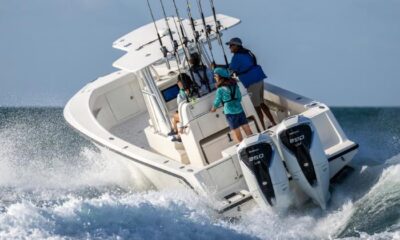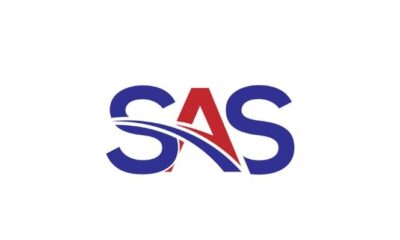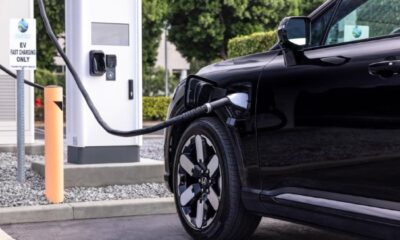Travel
United Grows Its Electric Battery Portfolio with Investment in EPS

Electric Power Systems (EPS) modules are technology that could be compatible with and used in support of United’s future decarbonizing investments
United is targeting EPS modules for potential use in airline’s current ground operations, while eyeing an all-electric flight academy in the future
United announced an investment in Electric Power Systems, a company producing battery technology that can potentially be used for a broad suite of aerospace applications. Rather than producing battery cells, the company’s compatible module technology can be adapted to support a variety of batteries, optimizing performance and safety. The versatility of the technology could allow United to consider EPS’s modules for a number of near-term applications, and as part of its longer-term operations that support decarbonization. This is United’s second investment in electric battery technology, after sodium-ion battery-maker Natron.
“Typically, we’ve had a clear vision of how to integrate sustainability investments into our operations. What makes EPS’s technology different and exciting is the scope of operational possibilities where we have the option to deploy it today and, in the future, to help electrify and decarbonize our operations,” said United Airlines Ventures President Michael Leskinen. “United’s best roadmap to reaching net zero carbon emissions by 2050, without relying on traditional carbon offsets, is by using every tool at our disposal – that includes the potential use of EPS’s impressive portfolio of electric aircraft powertrain solutions, including high-performance power electronics, and energy storage systems.”
Electric Power Systems aims to provide a whole battery “ecosystem” for aviation, from the packs on aircraft to charging stations on the ground. This in turn is designed to keep costs low and provide rapid charges without degrading the life of the battery. Key to the entire proposition of electric aviation is designing a battery that can store a high amount of energy with as little weight as possible. If a battery is too heavy, it makes an aircraft uneconomic compared to conventional fossil fuel-powered planes.
“We are excited to collaborate with United Airlines Ventures as we continue to advance electric aviation technology,” said Nathan Millecam, CEO of Electric Power Systems. “United’s investment will enable us to scale our operations and expedite the development of our cutting-edge powertrain solutions. By working together, our aim is to revolutionize air travel and build a more sustainable future for the industry.”
United is exploring options to move its pilot training academy, Aviate®, away from internal combustion-powered training aircraft to electric ones. EPS’s powertrain could serve as the core propulsion system for a family of future electric aircraft concepts, starting with an electric trainer and scaling to larger variants as technology advances.
Additionally, United has more than 12,000 pieces of motorized ground equipment across its operations, of which about one third are currently electric. EPS’s battery modules could potentially be deployed in support of several uses, including:
- Charging electric ground equipment
- Charging anticipated future electric aircraft such as electric air taxis
- Electrified auxiliary power unit (APU) start products
- Electrified cold-chain storage product for cargo containers
United’s Commitment to Net Zero Emissions by 2050
United aims to be 100% green by reducing its GHG emissions 100% by 2050, without relying on traditional carbon offsets. In addition to the UAV Sustainable Flight FundSM, United has launched a SAF purchasing program called the Eco-Skies Alliance and established a venture fund – United Airlines VenturesSM – to identify and invest in companies and technologies that can decarbonize air travel. These strategic investments include carbon capture, hydrogen-electric engines, electric regional aircraft and air taxis. In May 2023, United received validation of our 2035 near-term emissions reduction target from the Science-Based Targets Initiative (SBTi) to reduce our carbon intensity 50% by 2035 from a 2019 base year. This year, United became the first U.S. airline to show customers an estimate of each flight’s carbon footprint in their search.
About United
At United, Good Leads The Way. With U.S. hubs in Chicago, Denver, Houston, Los Angeles, New York/Newark, San Francisco and Washington, D.C., United operates the most comprehensive global route network among North American carriers and is now the largest airline in the world as measured by available seat miles. For more about how to join the United team, please visit www.united.com/careers and more information about the company is at www.united.com. United Airlines Holdings, Inc., the parent company of United Airlines, Inc., is traded on the Nasdaq under the symbol “UAL”.
About Electric Power Systems
Electric Power Systems (EPS) is a leading provider of high-power, scalable powertrains that are certifiable for electrified aviation. It develops energy storage systems, DC fast-charging stations, and electric propulsion products for Aerospace. EPS has numerous battery systems currently powering customer flight demonstrator vehicles (e.g., NASA X-57, Bell Nexus, Aura Flight Sciences Pegasus, Embraer Ipanema, and Boeing CAV). Advanced features produce safer battery systems resulting in a perfect safety record in field. EPS is currently partnered with the FAA to certify batteries for general aviation aircraft and will complete its first TSO in the very near future. For more information, please visit www.epsenergy.com
United Cautionary Statement Regarding Forward-Looking Statements
This press release contains certain “forward-looking statements” within the meaning of the Private Securities Litigation Reform Act of 1995 relating to, among other things, plans and projections regarding the company’s environmental, social or governance (ESG) goals, targets, commitments, strategies and initiatives and related business and stakeholder impacts. All statements that are not statements of historical facts are, or may be deemed to be, forward-looking statements. Such forward-looking statements are based on historical performance and current expectations, estimates, forecasts and projections about our future financial results, plans, objectives, goals, targets, commitments, strategies and initiatives and involve inherent risks, assumptions and uncertainties, known or unknown, including internal or external factors that could delay, divert or change any of them, that are difficult to predict, may be beyond our control and could cause our future financial results, plans, objectives, goals, targets, commitments, strategies and initiatives to differ materially from those expressed in, or implied by, the statements. These risks, assumptions, uncertainties and other factors include, among others, any failure to meet stated ESG goals, targets, commitments, strategies and initiatives in the time frame expected or at all as a result of many factors, including changing societal, market, competitive, regulatory or stakeholder expectations; any delay or inability of United Airlines to realize the expected benefits of the investment; and any delay or failure of any technology to be fully developed or become functional or marketable or to serve the purpose for which it was designed. No forward-looking statement can be guaranteed. Forward-looking statements in this press release should be evaluated together with the many risks and uncertainties that affect United’s business and market, particularly those identified in the “Management’s Discussion and Analysis of Financial Condition and Results of Operations” and “Risk Factors” sections in United’s Annual Report on Form 10-K for the year ended December 31, 2022, as updated by our subsequent Quarterly Reports on Form 10-Q, Current Reports on Form 8-K and other filings with the Securities and Exchange Commission. Risks and uncertainties related to United’s environmental compliance, climate commitments and climate strategy are further described in Part I, Item 1A. Risk Factors of United’s Annual Report on Form 10-K for the fiscal year ended December 31, 2022 — “We are subject to many forms of environmental regulation and liability and risks associated with climate change and may incur substantial costs as a result. In addition, failure to achieve or demonstrate progress towards our climate goals may expose us to liability and reputational harm.”
The statements included in this press release are made only as of the date of this press release and except as otherwise required by applicable law or regulation, United Airlines undertakes no obligation to publicly update or revise any statement, whether as a result of new information, future events, changed circumstances or otherwise. In particular, United Airlines reserves the right to change, amend, supplement or abandon some or all of the statements regarding goals, targets, commitments, strategies, initiatives, intentions and other statements from time to time without notice.
In addition, some of our disclosures in this press release are estimates or based on assumptions due to inherent measurement uncertainties. The use of words such as “partnered,” “partnering,” “partner” and variations of such words in this press release is not intended to and shall not be construed to imply that a legal partnership relationship exists between United and any other company.
Source – United
-

 Auto1 year ago
Auto1 year agoHonda Marine Debuts All-New BF350 Outboard Company’s First V8 Motor Available Commercially, Flagship Model Offers Premium Power and Unparalleled Performance for Extraordinary Boating Experiences
-

 Technology2 years ago
Technology2 years agoNew Global Study: 1 in 2 Executives Experiencing “Resiliency Gap”
-

 Resources2 years ago
Resources2 years agoList Of Commercial Banks in Bahamas
-

 Lifestyle1 year ago
Lifestyle1 year ago2023 Nike World Basketball Festival Brings the Best of Basketball Style, Culture and Community
-

 Auto1 year ago
Auto1 year agoNew Features Further Increase Desirability Of Bentayga Range


















